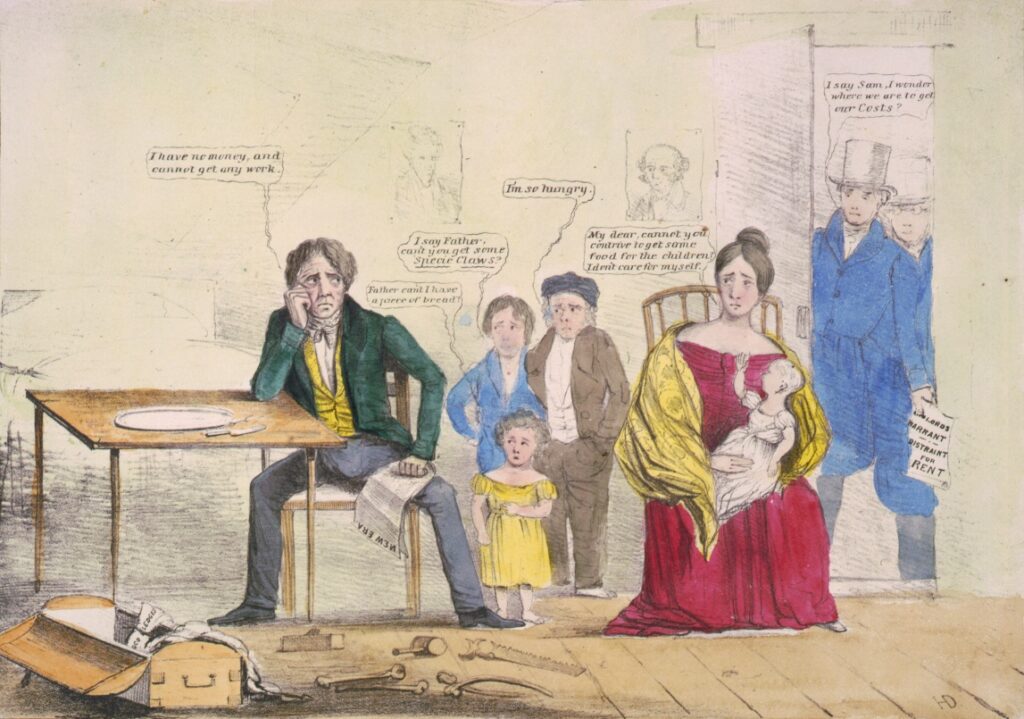The Tariff Lesson of the 19th Century

As I’ve said many times now, to understand the New Gilded Age personified by Trump, it’s far, far more useful to study 19th and early 20th century America than it is to freak out with Nazi comparisons. It’s not that the latter lack all value, but the goals here are so obviously a world of Plessy, Lochner, Comstock, and the Chinese Exclusion Act. And yet, thanks to our over-obsession about World War II, which I mostly blame on Boomers contemplating how they failed their parents, which was the whole point of the Greatest Generation nonsense, we are so wanting to just talk Nazis all the time.
Well, the historian Scott Nelson has an excellent essay on the relationships between onerous tariffs and horrible economic depressions that plagued the 19th century. Maybe tariff battles aren’t as sexy as Nazis but they are more useful to understand when our idiot president is obsessed with recreating the McKinley years.
As a former British colony, the United States has always been particularly vulnerable to tariff wars. For centuries, Britain molded its colonies’ trade to the motherland’s purpose. The colonies of New York, Maryland, and South Carolina were expected to provide flour and rice for the slave-powered tobacco and sugar plantations in Virginia and the Caribbean. Britain prohibited the colonies from manufacturing their own textiles, iron, and paper. The increasing limitations Britain imposed on the colonies’ international trade finally led to the American Revolution. From its start, the Articles of Confederation and then the Constitution sought to limit executive action that would sharply or rapidly change international trade. Revenue bills were lodged in the House, the Senate was required to approve them, and the executive remained limited to the power of the veto.
America’s first depression had its origin in 1816 when Britain—having just won a world war against Napoleon—dumped vast quantities of woolen fabric originally contracted to clothe European soldiers and sailors. It was Britain’s first Army-Navy surplus sale. American merchants and wool manufacturers balked at the sudden arrival of cheap woolen fabric and urged Congress to pass, in March 1817, the Navigation Acts, which blocked British ships and their cheap goods. Britain retaliated in May with orders-in-council that effectively blocked U.S. ships from delivering grain to Britain’s Caribbean colonies. U.S. farmers lost the Caribbean markets they had dominated for more than a century. By December 1818, U.S. wheat prices dropped 50 percent, and farmers could no longer pay the mortgages on their land owed to the U.S. Land Office. Farmers’ debts to country stores went unpaid, and so did country stores’ debts to furnishing merchants in U.S. cities.
The Panic of 1819 had begun, and the trade restrictions continued to distort markets. Over time, New York rescued itself by smuggling wheat across the Great Lakes to Canada, where Toronto and Montreal millers turned it into bonded British flour for sale in the Caribbean. Virginia, Georgia, and South Carolina only prospered by shifting from wheat and rice to slave-based cotton production. Within a decade, the Anglo-American trade war had made the cost of feeding Caribbean plantations so high that slaveholders there pressed the mother country to abolish slavery—but not before reimbursing them for their slaves. International trade restrictions first passed in 1817 stifled U.S. grain exports, which further entrenched cotton production—and with it, slavery—in the U.S. South.
Hasty executive action in international trade by President Andrew Jackson started the next American depression. Since the depression of 1819, long, snaking credit chains had funded the expansion of cotton plantations in the U.S. South. The Second Bank of the United States, together with seven British banks called the Seven Sisters, borrowed from British investors and issued bills of exchange that provided credit to smaller, regional U.S. banks, which then gave short-term loans to slave traders in the Upper South, who bought enslaved people in Virginia and South Carolina and sold them to cotton plantations in Georgia, Mississippi, and Louisiana. Because interest rates were set by the Bank of England, a small increase in the rate in London could make it impossible for slaveholders to buy land or slaves in New Orleans.
Jackson, persuaded that the Second Bank and the Seven Sisters were plotting against him, passed a series of executive orders in 1834 and 1836 designed to break the slaveholders’ dependence on British credit. One order removed deposits from the Second Bank of the United States, transferring them to a series of favored banks connected to Jackson’s political allies. Another order prohibited farmers from borrowing from banks to pay their mortgages to the U.S. Land Office, forcing them to use gold, the currency at the time. This benefited Southern slaveholders with gold mines in northern Georgia and western North Carolina (this was before gold was discovered in California), but the sudden demand for gold greatly exceeded supply.
The Bank of England, seeing its own gold disappearing into the United States, raised the bank rate and briefly cut the Seven Sisters off from international exchange. Thus began the depression of 1837. Southern planters absconded from their debts, abandoned plantations, and carried their slaves to the independent Republic of Texas where they were safe from creditors. Stores folded. Manufacturers failed. Within five years, seven states failed to pay bonds they had issued internationally.
There’s so many fun examples of American policy failure!


